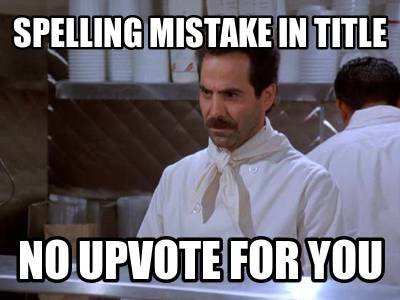Steemit is a communication channel. Whether we're writing blog posts, creating videos, or describing photos and images, our intent is the same: to share our message with others. But how do we make sure we're putting our time and effort to good use and communicating effectively?
By ensuring our content reflects the five Cs of good communication: clear, correct, concise, consistent and complete.

Clear
This is arguably the most important of the five Cs, because if your audience can't understand what you're trying to tell them -- or worse, they misunderstand -- then you've wasted both your time and theirs.
The best way to ensure that your message is clear is to have someone from your target audience read it over. For example, if you're trying to explain cryptocurrency to the average Joe, then you're test reader probably shouldn't be a cryptocurrency expert who understands the jargon and can read in between the lines. No, your test reader should be an average Joe, with little to no experience or knowledge of the subject at hand. If you're message is clear to them, then it will be clear to your target audience.
Correct
This is the second most important thing you should check for when reviewing your writing. And yes, you should always review your work before you hit 'publish' -- even if you only have a few minutes time. Depending on the type of content you're creating, a serious error can cost you time and money, or do irreparable damage to your reputation.
However, even small errors like spelling and grammar mistakes can have a negative impact on your credibility. People notice these things; they love to find them and point them out. The few minutes it takes to read over your work -- don't just rely on spell check -- and ensure that it's correct is well worth it.

Concise
Mark Twain famously wrote, “I apologize for writing you a long letter. I didn’t have time to write you a short one.”
Without context, some might find this quote confusing. Twain isn't comparing writing a short story to a novel, or a news article to a thesis paper. He's remarking on the time and effort required to clean up your writing and remove any extraneous details that muddy your message.
So whether you're writing a book or a Steemit post, every word, every sentence, should serve a purpose. If they don't, then you must cut them. This is what writers mean when they advise you to "kill your babies." It doesn't matter how beautifully written a sentence or paragraph is, if it doesn't drive your story forward, it needs to go.
Consistent
Consistency and clarity go hand in hand. In terms of word choice, while you don't want your writing to sound repetitive, you also don't want to distract your readers by using multiple words or phrases to describe the same thing. Focus on one meaning per word and one word per meaning.
Visual consistency is also important. Headings, font, capitalization, numbers, lists, hyphenation -- these things can serve to distract the reader when applied haphazardly to the text. But when applied consistently, they bring visual order to your content and make it much easier for your reader to consume and comprehend.
Complete
This last point is largely subjective; there's always something more we can add or say about a particular topic. You don't want to go on ad infinitum, but you do want to make sure that you've covered your key points and answered any obvious questions your reader might have, or at least pointed them to where they can find those answers. A good way to check for completeness is to confirm that you've answered the five Ws -- who, what, where, when and why -- as well as how.
Many writers have added other C words to the mix, such as creative, connected, or credible. However, in my experience as an editor, I've found that the five Cs listed above make up the core of good communication; if you've covered all of these, then you're off to a great start.
